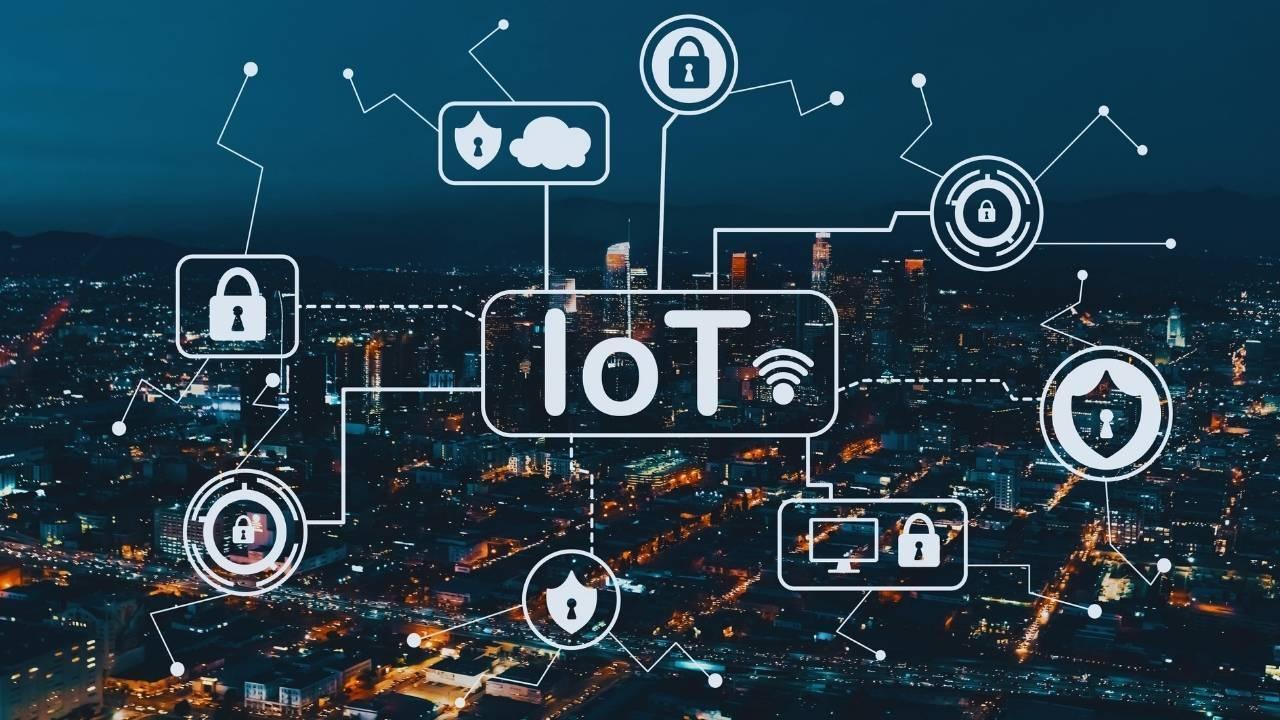
Join 10k+ people to get notified about new posts, news and tips.
Do not worry we don't spam!

Post by : Anis Farhan
Invisible IoT refers to the seamless integration of sensors, connectivity, and analytics that function unnoticed by users. Rather than relying on visible gadgets, this technology employs tiny embedded sensors to quietly gather data, drive strategic decisions, and optimize operations, consequently fostering new business models.
From a commercial standpoint, invisibility serves as an asset. With sensors that are diminutive, energy-efficient, and cost-effective, the deployment becomes economically viable. These sensors blend into everyday environments—walls, floors, packaging, vehicles, and even attire—significantly enhancing IoT's capacity to digitize, monetize, and sense various conditions.
The affordability of tiny sensors simplifies deployment activities. With units that cost mere cents, embedding sensors in products, components, or fields transforms previously marginal business cases into viable projects.
These mini sensors facilitate extensive data collection, allowing organizations to acquire granular insights from a plethora of variables frequently. This real-time data collection surpasses traditional monthly checks, enabling predictive maintenance and comprehensive monitoring.
As sensors operate discreetly, they create adaptive systems responsive to user needs. For instance, smart factories that self-adjust, inventory tracking in warehouses, and intelligent buildings that manage climates exemplify how sensor integration can evolve environments into interactive spaces.
Tiny sensors facilitate a shift towards service-oriented models, introducing concepts like “sensor as a service” and performance-based contracts. This transition encompasses outcomes over equipment sales, transforming costs into revenue streams.
Progress in sensor and electronics technology has resulted in smaller, more efficient units, making embedding feasible for a wide variety of applications. With advances in MEMS technology, sensors for various conditions can be included within compact sizes.
The expansion of connectivity solutions—like LPWANs and Bluetooth LE—ensures sensors can function in remote or challenging locations, further broadening their usage scope.
Producing substantial data, tiny sensors require effective analytics to avoid noise. Edge processing plays a pivotal role in managing information flow, while cloud platforms analyze data to bolster actionable insights yielding business results.
Modern sensors now execute advanced functions beyond basic measurements. Onboard intelligence enables anomaly detection and data compression, enhancing their operational effectiveness.
Industries are utilizing minute sensors to monitor vital machinery conditions, allowing for preemptive maintenance that minimizes downtime and bolsters productivity. Investors recognize these sensors as essential tools for achieving return on investment.
Embedded sensors within transportation crates monitor various parameters, ensuring the quality and compliance of sensitive goods while enhancing logistics efficiency.
Utilizing small occupancy and environmental sensors, smart buildings can optimize resources, leading to improved energy management and maintenance schedules.
Sensors in retail settings help manage inventory and monitor customer behaviors invisibly, significantly improving user experiences and reducing operational waste.
Micro-sensors integrated into wearable technology provide essential health monitoring, enhancing preventive care and early detection for patients.
With unobtrusive sensors, businesses can reap competition advantages through:
Improved Speed – Instantaneous real-time data fosters rapid response.
Operational Insights – Monitoring numerous parameters conceals inefficiencies, providing clarity where others lack.
Service Revenue Models – Guaranteeing performance allows for service-based revenue stream proliferation.
As organizations deploy massive sensor networks, managing data quality becomes critical for actionable insights.
Given their covert nature, security risks must be prioritized to protect against misuse and ensure trust in sensor technology.
Deploying sensors in isolated areas comes with challenges in terms of power and connectivity, which must be factored into any deployment plan.
Effective management of large sensor arrays requires seamless integration with existing business systems for optimal functionality.
Companies must define clear metrics of success for their sensor deployments to ensure meaningful contributions to business growth.
Identify specific business challenges before implementing sensor technology, ensuring that deployments are purposeful and actionable.
Design sensor deployment plans that consider large-scale operations from the outset, incorporating best practices for management and updates.
Establish comprehensive analytics frameworks to guarantee effective use of sensor data.
Robust security protocols are non-negotiable for protecting sensitive information and maintaining operational integrity.
Regularly assess key performance indicators to refine sensor utilization and maximize value.
Explore innovative business models beyond one-time sales, integrating sensor data to create recurring revenue opportunities.
As the price of sensors continues to decrease, their deployment will branch into more sectors, making sensing ubiquitous.
With advancements in edge computing, sensors will increasingly perform local processing, significantly reducing bandwidth requirements.
Emerging connectivity technologies, such as 6G, will facilitate broader and deeper sensor deployments across various industries.
Sensors will play a pivotal role in supporting ecological monitoring and compliance, contributing to sustainability efforts.
The integration of sensors will necessitate forward-thinking approaches to privacy and consent as their usage expands.
Businesses will increasingly leverage invisible sensors to offer result-oriented service models, ensuring value generation from deployments.
The evolution of small, energy-efficient sensors is revolutionizing the IoT landscape. As they fade from view, their transformative impacts on reducing costs, minimizing waste, and enhancing decision-making become more apparent.
For businesses, embracing sensors as integral infrastructure unlocks new operational efficiencies and revenue possibilities. The key to success lies in aligning sensor deployment with defined challenges, ensuring secure data practices, and adapting business models to leverage insights.
In the forthcoming years, invisible sensors will persist as essential components of operational strategy, serving as silent facilitators of improved productivity and insight.
This article is intended for informational purposes only and does not provide financial or investment advice.










Paramount+ to Stream PBR’s 'Unleash the Beast' in New Five-Year Deal
Paramount+ will stream PBR’s 'Unleash the Beast' across the U.S. starting this December under a five

Zohran Mamdani Clinches NYC Mayoral Seat as Victory Speech Blends Politics and Bollywood
Zohran Mamdani won New York City's mayoral race, becoming the city's first Muslim and South Asian ma

India Wins First Women’s World Cup 2025 Title
India lifts its maiden Women’s World Cup 2025 title! Harmanpreet Kaur’s team stuns South Africa in a

Manuel Frederick, 1972 Olympic Bronze Goalkeeper, Dies at 78
Manuel Frederick, a member of India’s 1972 Olympic bronze hockey team, has died in Bengaluru at 78 a

Muhammad Hamza Raja Wins IFBB Pro Card Puts Pakistan & UAE on Global Stage
Pakistani bodybuilder Muhammad Hamza Raja earns IFBB Pro Card in Czech Republic, showcasing Dubai’s

Shreyas Iyer’s Recovery Underway After Spleen Laceration in Sydney ODI
Shreyas Iyer is recovering after a spleen laceration sustained while taking a catch in the Sydney OD